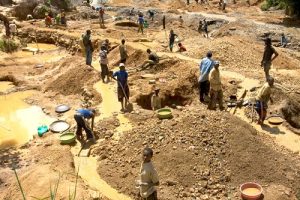
Following the political reform in mid- 2018, Ethiopia has been aggressively exploring homegrown solutions to address various problems. Combating climate change and environmental concerns is one of the initiatives that the government is actively pursuing.
The Ethiopian Green Legacy, in particular, is one of the initiatives that assists the country in combating climate change. Ethiopia has promoted environmentally friendly agricultural methods such as agroforestry, conservation agriculture, and drought-resistant crops. These activities contribute to better soil health, increased resistance to climate change, and lower greenhouse gas emissions.
In addition, the country has made investments in renewable energy, notably hydropower and wind power. The country’s commitment to increasing renewable energy generation helps to reduce dependency on fossil fuels while also lowering greenhouse gas emissions.
Ethiopia is working to build more climate-resilient infrastructure. Ethiopia has been incorporating climate resilience into the creation of its infrastructure, including roads, bridges, and water management systems. These initiatives seek to improve the country’s ability to endure the effects of extreme weather events and changing climatic circumstances.
To treat and care for the environment, the nation has supported community-based adaptation efforts that empower local populations to deal with the effects of climate change. Water management, afforestation, and the development of climate-resilient livelihoods are examples of such efforts.
More importantly, the Ethiopian Green Legacy, in particular, is one of the initiatives that assists the country in combating climate change. Ethiopia has promoted environmentally friendly agricultural methods such as agroforestry, conservation agriculture, and drought-resistant crops. These activities contribute to better soil health, increased resistance to climate change, and lower greenhouse gas emissions. By planting billions of trees, the country aims to sequester carbon, mitigate the impacts of climate change, and protect biodiversity.
Ethiopian Green Legacy is a nationwide effort begun in 2019 by the Ethiopian government to tackle deforestation and environmental deterioration. In a single rainy season, the initiative obtains the intended results by planting millions of trees across the country. This large-scale initiative is part of Ethiopia’s homegrown efforts to combat climate change and conserve its natural resources. Citizens, organizations, and foreign partners have overwhelmingly supported and participated in the Green Legacy initiative, making it a significant step in promoting environmental sustainability in Ethiopia.
According to Ethiopian Prime Minister Abiy Ahmed, Ethiopia has been adopting domestic solutions to reduce emissions and enhance resilience. The Green Legacy project is a program that was established in 2019 to counteract the detrimental effects of climate change.
The effort has been in place for the past five years. With the help of afforestation and planting programs, Ethiopia has placed approximately 700,000 hectares of existing biodiversity and carbon-rich natural forests under a sustainable participatory forest management scheme.
Over 25 billion seedlings, including trees, fruit, and cattle feeds, have been planted as part of the national Green Legacy Initiative from 2019 to 2022. Apart from being intended to assist the country in reforesting and improving its agricultural activities, tree planting has become a tradition among Ethiopians, with over 25 million individuals participating in tree-planting events each year.
Through homegrown solutions, the government developed 130,000 nurseries across the country, and millions of people participate in seedling planting and seedling care each year. This is a proactive reaction to serious environmental and social economic concerns. It minimizes carbon emissions, protects biodiversity, creates jobs, and stimulates industries such as tourism.
Currently, the effort has achieved amazing success, with 32.5 billion tree seedlings planted. The country’s goal is to achieve 15 billion people by 2026. When finished, the endeavor will be the world’s largest afforestation project.
The green legacy effort, which is part of the homegrown program, is not confined to the country. Its influence extends beyond boundaries since the country shares tree seedlings with other countries. Since the commencement of the inaugural Green Legacy Initiative in 2019, Ethiopia has been preparing numerous tree seedlings for its neighboring countries.
The country proposed to deliver 356 million seedlings to Sudan, 79 million to Eritrea, 9 million to Djibouti, 80 million to Somalia, 30 million to Somaliland, 100 million to Kenya and Uganda, 19 million to Puntland, and 136 million to Rwanda. As a result, it has the potential to play a catalytic role in Africa, complementing current projects such as the Africa Forest Landscape Restoration Initiative and the Great Green wall.
As a result, the Green Legacy initiative has greatly extended the production of perennial vegetables and fruits as part of the home-growing program. The government has increased the supply of poultry, dairy, cattle, and honey to diversify sectors vulnerable to the effects of climate change and encourage nutrition-sensitive agriculture. The initiative also promotes eco-friendly and resource-efficient greening and farming techniques to improve effective water management and prioritize investments in renewable energy-based irrigation systems.
Taking the efforts of the homegrown program efforts, the Green Legacy initiative has had an impact on the fight against climate change. Ethiopia’s Ministry of Agriculture has announced that about 85 percent of the 7.5 billion seedlings planted during the rainy season of the past Ethiopian Fiscal Year have survived and are thriving. As part of its ambitious plan to plant 50 billion trees in two phases of the Green Legacy Initiative, Ethiopia planted 32.5 billion saplings thus far in the first phase and the first year of the second phase.
Indeed, the Green Legacy initiative has had an influence on the battle against climate change by leveraging the efforts of the homegrown program activities. According to Ethiopia’s Ministry of Agriculture, around 85 percent of the 7.5 billion seedlings planted during the preceding Ethiopian fiscal year survived and thrived. Ethiopia planted 32.5 billion saplings in the first phase and the first year of the second phase of the Green Legacy Initiative, as part of its ambitious goal of planting 50 billion trees in two phases.
About 85 percent of the total 7.5 billion seedlings planted during last year’s rainy season have survived. Out of these 7.5 billion seedlings planted, 57 percent were mixed forest and fruit-bearing saplings, while the remaining 43 percent were planted for environmental protection and watershed development, he noted.
Emphasizing the rigorous monitoring system in place, with biannual surveys conducted to ensure the well-being of the seedlings, the minister explained that the exploration work will be done after the end of summer and winter months. Accordingly, as per the first inspection conducted after the rainy season, 85 percent of the seedlings planted were approved to survive.
“The survival rate assessments have to be conducted twice; first immediately after the rainy season (summer) and second after the end of the winter. In the first round of the biannual survey after the rainy season, we found about an 85 percent survival rate for seedlings planted during the previous rainy season. Maintaining or even surpassing this rate in future plantings is crucial.”
Stressing that the ministry will work to increase the approval rate by continuously carrying out care activities, Girma stated that the second exploration work will be done after the completion of the winter season. Looking ahead, the minister revealed that preparations for the upcoming rainy season are well underway.
In collaboration with regional authorities, a plan to cultivate 9 billion seedlings is in place, leveraging the established nurseries and practices developed over the past years, he stated. Girma acknowledged the varying preparation times for different species, particularly indigenous trees, and assured that all necessary measures are being taken to ensure optimal planting conditions. The Green Legacy Initiative, with Ethiopia aiming to plant 17.5 billion trees in the next three years, is rapidly approaching meeting its ambitious target of planting 50 billion saplings, according to him.
In general, Ethiopia is promoting and executing the Green Legacy initiative as one of its homegrown programs aimed at mitigating the harmful effects of climate change. Ethiopia’s dedication to combating climate change and supporting sustainable development through a combination of government legislation, community participation, and international partnership is exemplified by these local solutions. It also inspires optimism by promising a better, more sustainable future for everybody.
BY EPHREM ANDARGACHEW
THE ETHIOPIAN HERALD TUESDAY 2 JANUARY 2024





